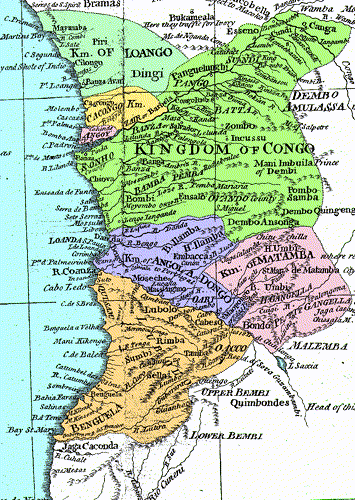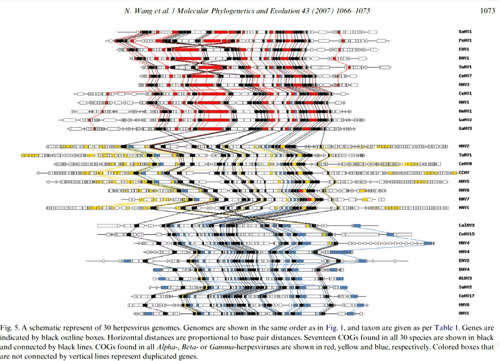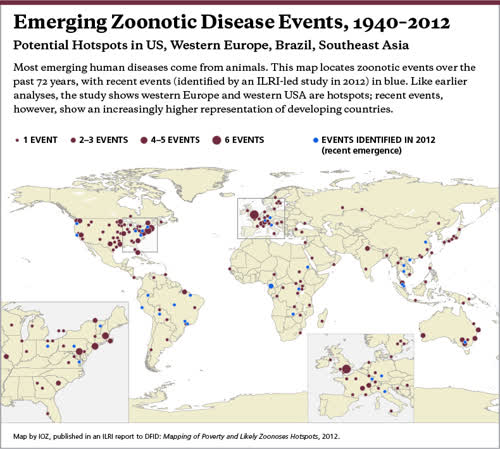|
The Kingdom of Kongo (Kongo: Kongo dya Ntotila or Wene wa Kongo; Portuguese: Reino do Congo) was an African kingdom located in west central From c. 1390 to 1891 it was mostly an independent state. From 1891 to 1914 it was a vassal state of the Kingdom of Portugal. In 1914, the titular monarchy was forcibly abolished, following Portuguese victory against a Kongo revolt. The remaining territories of the kingdom were assimilated into the colony of Angola. The modern-day Bundu dia Kongo sect favors reviving the kingdom through secession from Angola, the Republic of the Congo, the Democratic Republic of the Congo, and Gabon. |
|
Epidemiology of Aujeszky's disease in swine and cattle
Viggo Bitsch; DVM, DVSc 2015 A highly fatal hemorrhagic disease has been identified in 10 young Asian and African elephants at North American zoos. In the affected animals there was ultrastructural evidence for herpesvirus-like particles in endothelial cells of the heart, liver, and tongue. Consensus primer polymerase chain reaction combined with sequencing yielded molecular evidence that confirmed the presence of two novel but related herpesviruses associated with the disease, one in Asian elephants and another in African elephants. Otherwise healthy African elephants with external herpetic lesions yielded herpesvirus sequences identical to that found in Asian elephants with endothelial disease. This finding suggests that the Asian elephant deaths were caused by cross-species infection with a herpesvirus that is naturally latent in, but normally not lethal to, African elephants. A reciprocal relationship may exist for the African elephant disease. |
|
Transmission of Ebola virus from pigs to non-human primates "Piglets inoculated oro-nasally with ZEBOV were transferred to the room housing macaques in an open inaccessible cage system. All macaques became infected. Infectious virus was detected in oro-nasal swabs of piglets, and in blood, swabs, and tissues of macaques. This is the first report of experimental interspecies virus transmission, with the macaques also used as a human surrogate." |
|
Vertebrate Reservoirs of Arboviruses: Myth, Synonym of Amplifier, or Reality? The rapid succession of the pandemic of arbovirus diseases, such as dengue, West Nile fever, chikungunya, and Zika fever, has intensified research on these and other arbovirus diseases worldwide. Investigating the unique mode of vector-borne transmission requires a clear understanding of the roles of vertebrates. One major obstacle to this understanding is the ambiguity of the arbovirus definition originally established by the World Health Organization. The paucity of pertinent information on arbovirus transmission at the time contributed to the notion that vertebrates played the role of reservoir in the arbovirus transmission cycle. Because this notion is a salient feature of the arbovirus definition, it is important to reexamine its validity. This review addresses controversial issues concerning vertebrate reservoirs and their role in arbovirus persistence in nature, examines the genesis of the problem from a historical perspective, discusses various unresolved issues from multiple points of view, assesses the present status of the notion in light of current knowledge, and provides options for a solution to resolve the issue. |
|
Asymptomatic humans transmit dengue virus to mosquitoes. Three-quarters of the estimated 390 million dengue virus (DENV) infections each year are clinically inapparent. People with inapparent dengue virus infections are generally considered dead-end hosts for transmission because they do not reach sufficiently high viremia levels to infect mosquitoes. Here, we show that, despite their lower average level of viremia, asymptomatic people can be infectious to mosquitoes. Moreover, at a given level of viremia, DENV-infected people with no detectable symptoms or before the onset of symptoms are significantly more infectious to mosquitoes than people with symptomatic infections. Because DENV viremic people without clinical symptoms may be exposed to more mosquitoes through their undisrupted daily routines than sick people and represent the bulk of DENV infections, our data indicate that they have the potential to contribute significantly more to virus transmission to mosquitoes than previously recognized. |
|
Eventual role of asymptomatic cases of dengue for the introduction and spread of dengue viruses in non-endemic regions. In dengue virus infections the asymptomatic cases are much more frequent than the symptomatic ones, but their true role in the introduction and subsequent spread of dengue viruses in non-endemic regions remains to de clarified. We analyzed data from English and French literatures to assess if viremia in asymptomatic dengue infections might be sufficient to represent a true risk. During outbreaks of dengue a large number of individuals are infected and since viremia levels in symptomatic patients are known to vary by many orders of magnitude, it is reasonable to augur that a proportion of asymptomatic cases might reach levels of viremia sufficient to infect competent mosquitoes. In addition, a number of new ways of contamination in man by dengue viruses were recently described such as blood transfusion, bone marrow transplantation, and nosocomial infections that may be worth considering. |
|
[Asymptomatic infections in man: a Trojan horse for the introduction and spread of mosquito-borne arboviruses in non-endemic areas?].
In mosquito-borne arbovirus infections in man the asymptomatic cases are much more frequent than the symptomatic ones, but their true role in the introduction and subsequent spread of such diseases in non-endemic areas remains to be clarified. We have collected pertinent data from English and French literature from 1952 to 2010 through Pubmed and other bibliographic sources. Data were analysed to assess if viremia in asymptomatic human arbovirus infections might be sufficient to represent a true risk for introduction in non-endemic areas. During dengue and chikungunya fever outbreaks, humans are believed to be the only vertebrate hosts. Since a very large number of individuals are infected and since viremic levels are known to vary by many orders of magnitude in symptomatic patients, it is reasonable to augur that a proportion of asymptomatic cases might reach levels of viremia sufficient to infect competent mosquitoes. Moreover, in both dengue and chikungunya fever, nosocomial infections have been identified representing an alternative opportunity for virus introduction in non-endemic areas. In zoonotic mosquito-borne arbovirus infections such as Japanese encephalitis or West Nile infection, the situation is quite different since humans are considered as "dead-end" hosts. However, the very large number of asymptomatic cases arising during outbreaks and the existence of newly recognised ways of contamination (blood transfusion, organ transplantation, transplacental way etc.) may also ensure their introduction and subsequent spread in new areas. |




